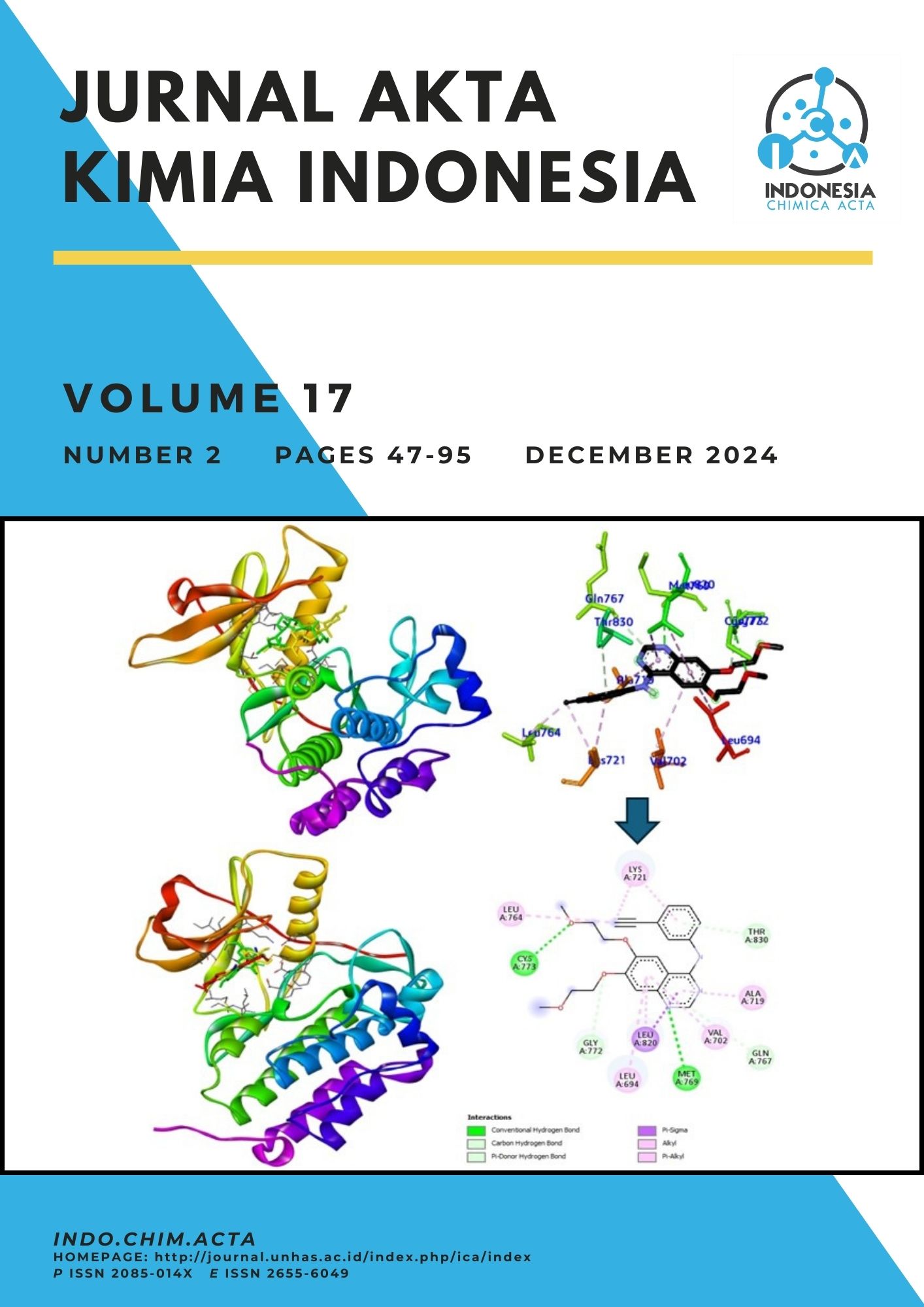The Effectiveness of Bulk Polymerization and Precipitation Polymerization on the Adsorption Capacity of Pb(II) Metal Ions Using Ionic Imprinted Polymer (IIP)
Abstract
Lead (II) metal is a heavy metal that has high toxicity and is easily decomposed, causing long-term adverse effects on the environmental and human health. Therefore, it is important to develop a separation method to effectively detect lead (II) metal ions in water so that it can reduce adverse effects on humans, organisms and aquatic biota. Lead ion imprinted polymer (Pb-IIP) was developed to detect Pb(II) metal ions in water. The commonly used polymerization methods are bulk and precipitation polymerization, therefore this study aims to determine the effectiveness of the adsorption ability of Pb(II) metal ions in water using bulk polymerization and precipitation polymerization methods. The IIP was successfully prepared using Pb(NO3)2 as a template, methacrylic acid (MAA) as a functional monomer, ethylenegycoldimethacrylate (EGDMA) as a crosslinker, benzoyl peroxide (BPO) as an initiator and etylenediaminetetraacetic acid (EDTA) as a chelating ligand. Based on the study, the IIP polymerization method using precipitation polymerization produces adsorbents that have good quality, high adsorption capacity and small particles even though both methods are selective for Pb(II) metal ions. The adsorption capacity of precipitation polymerization is (56,23 mg/g) and the adsorption capacity of bulk polymerization is (46,24 mg/g).
Authors
Copyright (c) 2024 Hayu Anggraini Hayu Anggraini

This work is licensed under a Creative Commons Attribution-ShareAlike 4.0 International License.
This is an open access journal which means that all contents is freely available without charge to the user or his/her institution. Users are allowed to read, download, copy, distribute, print, search, or link to the full texts of the articles in this journal without asking prior permission from the publisher or the author.
Jurnal Akta Kimia Indonesia (Indonesia Chimica Acta) operates a CC BY-SA 4.0 © license for journal papers. Copyright remains with the author, but Jurnal Akta Kimia Indonesia (Indonesia Chimica Acta) is licensed to publish the paper, and the author agrees to make the article available with the CC BY-SA 4.0 license. Reproduction as another journal article in whole or in part would be plagiarism. Jurnal Akta Kimia Indonesia (Indonesia Chimica Acta) reserves all rights except those granted in this copyright notice.

